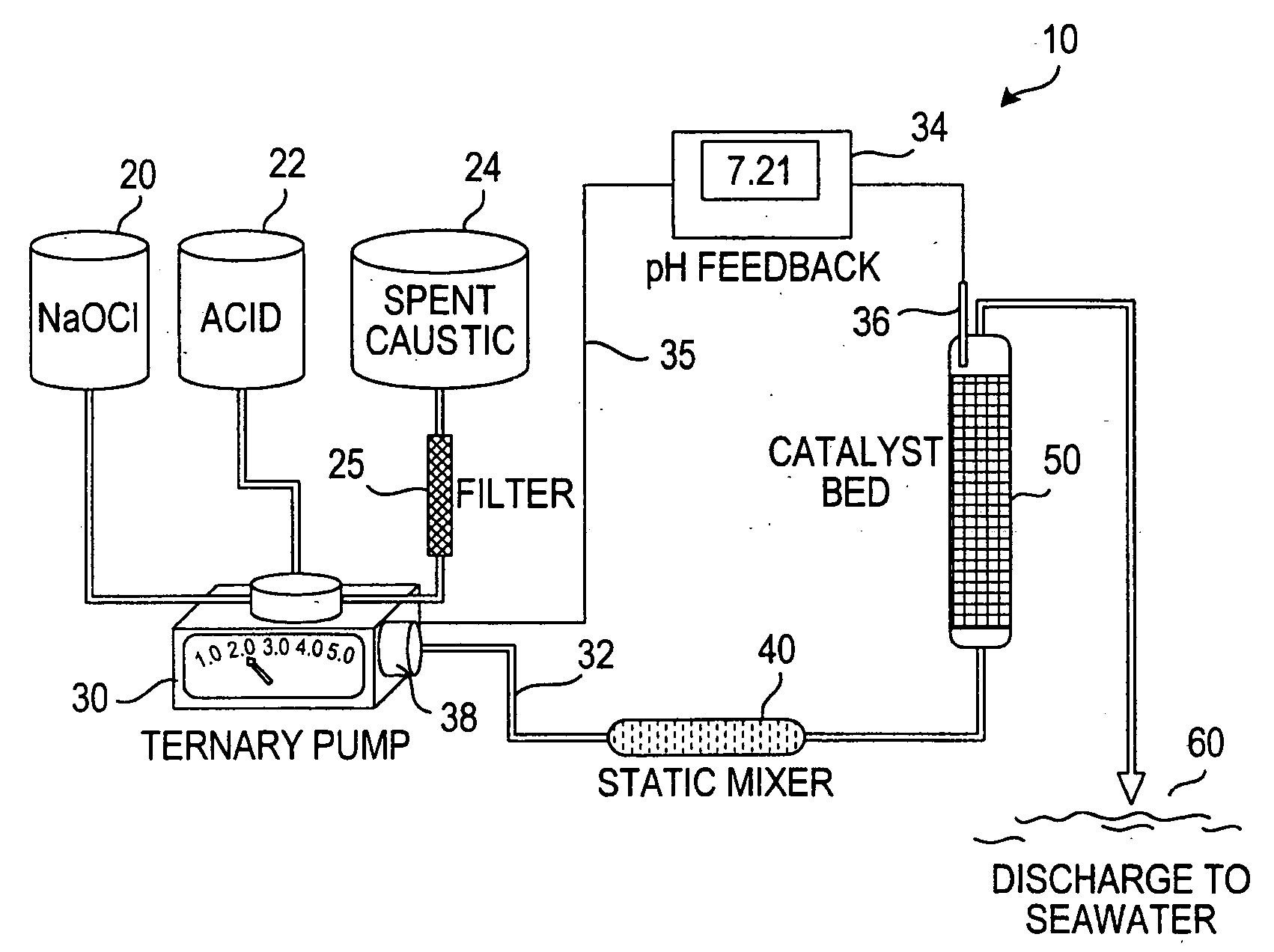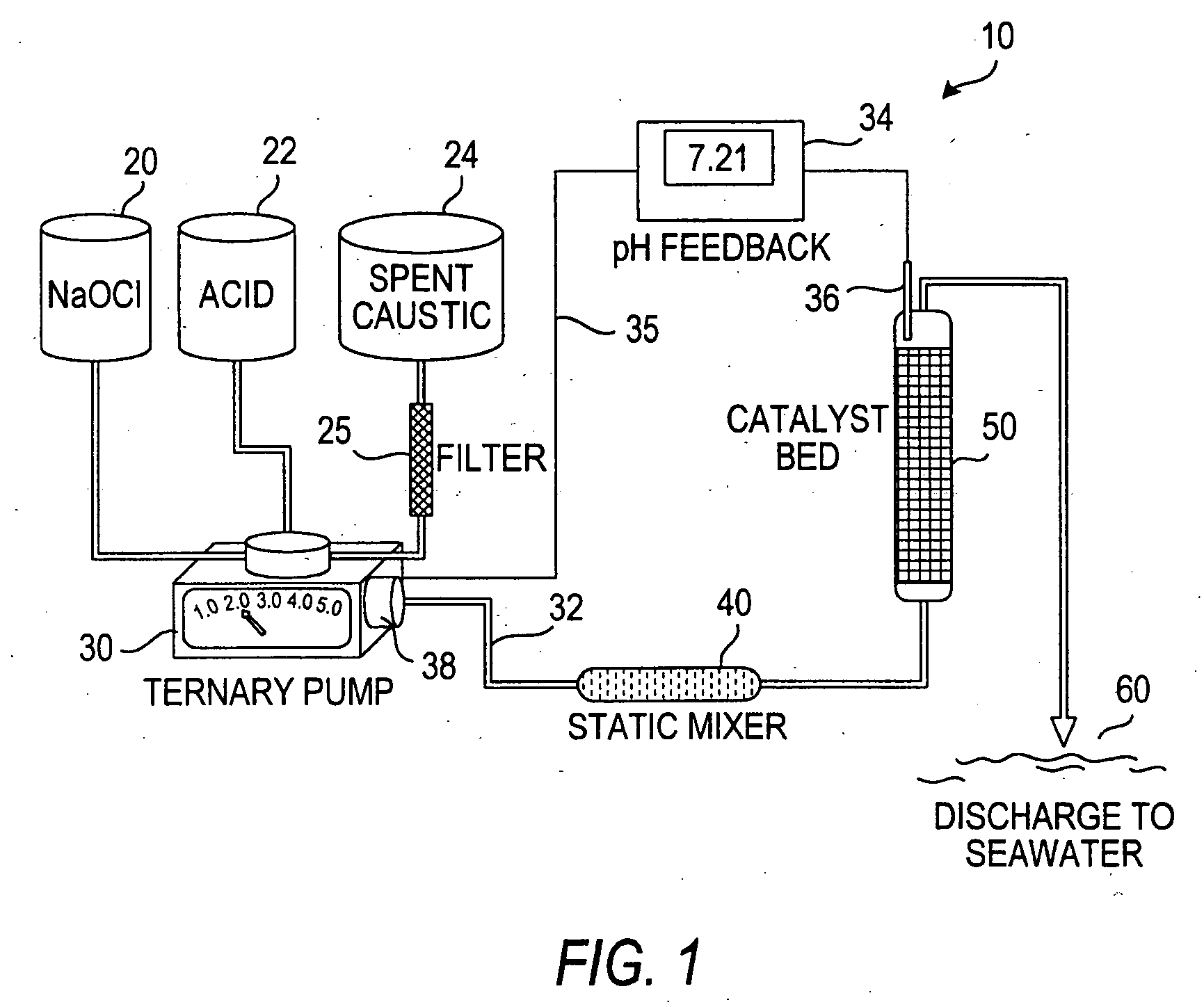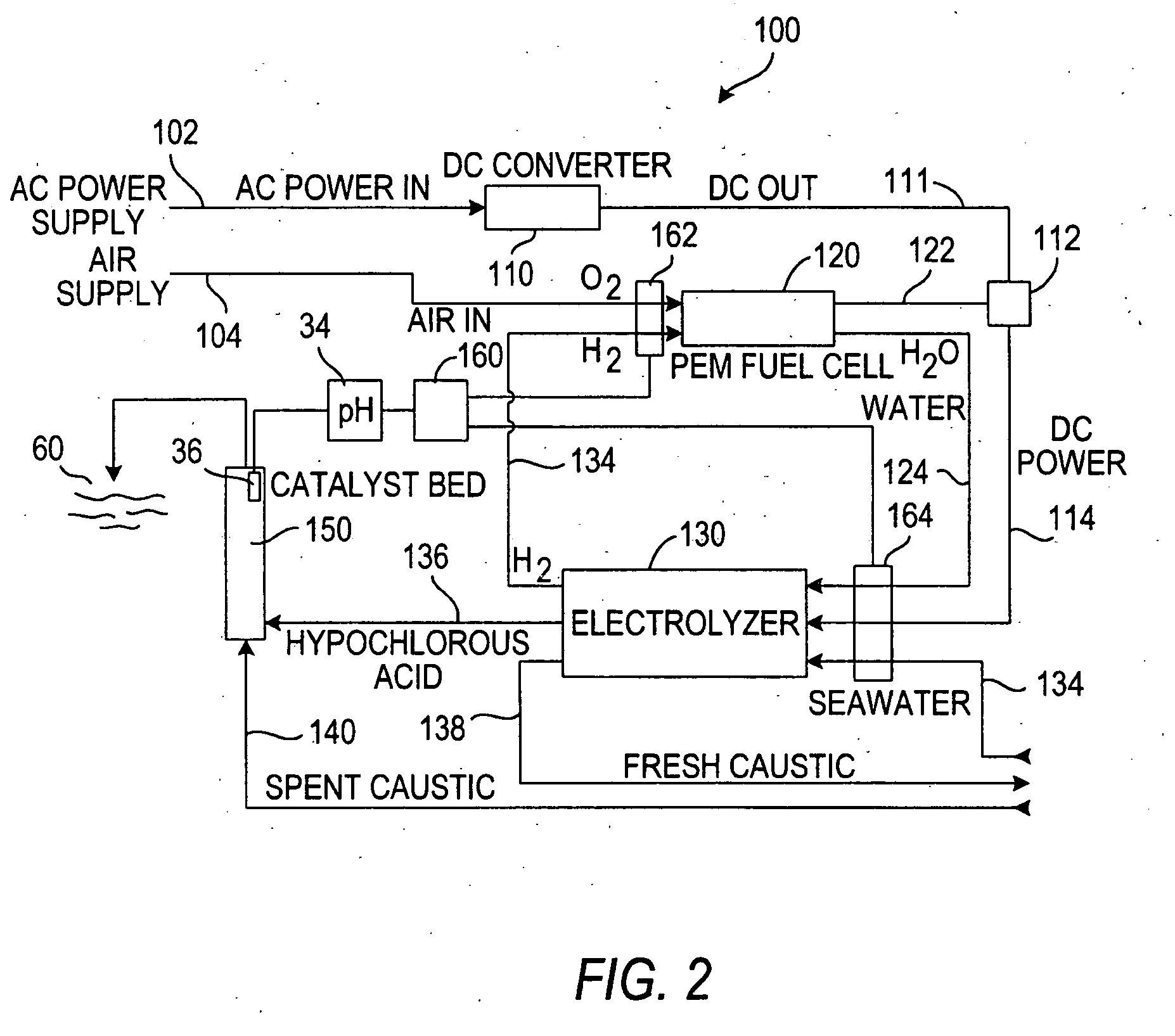Process for treating a sulfur-containing spent caustic refinery stream using a membrane electrolyzer powered by a fuel cell
a fuel cell and electrolyzer technology, applied in the direction of hydrocarbon oil refining, electrical equipment, water treatment, etc., can solve the problems of odiferous and toxic, waste of resources, waste of resources, etc., and achieve low capital investment, low operating cost, and simple
- Summary
- Abstract
- Description
- Claims
- Application Information
AI Technical Summary
Benefits of technology
Problems solved by technology
Method used
Image
Examples
example 1
[0035] To a 500 ml beaker provided with a stirring bar was added 50 ml of spent caustic solution and placed on a stirring plate. A combined probe and pH electrode was placed in the solution. The pH was measured at 11.65 against pH 7.00 and pH 4.00 reference buffers. To the caustic was added 200 ml of 5.25% sodium hypochlorite solution and 50 mg FeSO4, then stirred for 5 minutes, as the pH rose to 12.50 and the solution turned light blue due to presence of cobalt phthalocyanine Merox catalyst. Thereafter, 33 ml of 10 M concentrated hydrochloric acid (HCl) was slowly added to a pH of 7.00. During addition of the HCl, the solution turned greenish with copious foaming and evolution of green gas (chlorine). The final pH was 6.65 and the solution was brownish with iron precipitate, with no odor except a faint chlorine odor. The resulting neutral solution was stirred for 15 minutes. The product was analyzed by ion chromatography for anions of chloride, sulfide, mercaptide...
example 2
[0036] A 500 ml beaker provided with a stirring bar was placed on a stirring plate, 50 ml of spent caustic solution was added and a combined probe and pH electrode was placed in the solution. The pH was measured at 11.65 against pH 7.00 and pH 4.00 reference buffers. To the caustic was added 200 ml of 5.25% sodium hypochlorite solution and 50 mg FeSO4 and stirred for 5 minutes, as the pH rose to 12.32 and the solution turned light blue due to the presence of cobalt phthalocyanine Merox catalyst. The 10 M concentrated sulfuric acid was slowly added to a pH 7.00. During addition of 10 ml of concentrated H2SO4 the solution turned greenish with copious foaming and evolution of green gas (chlorine). The final pH was 6.07 and the solution was brownish with iron precipitate, with only a faint chlorine odor. The resulting neutral solution was stirred for 15 minutes. The product was then analyzed by ion chromatography for anions of chloride, sulfide, mercaptide, sulfate, sulfit...
example 3
[0037] A 500 ml beaker provided with a stirring bar was placed on a stirring plate, 50 ml of spent caustic was added and a combined probe pH and electrode was placed in the solution. The pH was measured at 11.65 vs reference buffers of pH 7.00 and pH 4.00. To the caustic was added 200 ml of 5.25% sodium hypochlorite solution and 50 mg FeSO4 and stirred for 5 minutes, as the pH rose to 12.43 and solution turned light blue due to presence of cobalt phthalocyanine Merox catalyst. The 11 M concentrated nitric acid was slowly added to a pH 7.00. During addition of 19 ml of concentrated HNO3, the solution turned greenish with copious foaming and evolution of green gas (chlorine). The final pH was 6.65 and the solution was brownish with iron precipitate, with only a faint chlorine odor. The resulting neutral solution was stirred for 15 minutes. The product was then analyzed by ion chromatography for anions of chloride, sulfide, mercaptide, sulfate, sulfite, carbonate, bisulfide...
PUM
| Property | Measurement | Unit |
|---|---|---|
| pH | aaaaa | aaaaa |
| pH | aaaaa | aaaaa |
| density | aaaaa | aaaaa |
Abstract
Description
Claims
Application Information
 Login to View More
Login to View More - R&D
- Intellectual Property
- Life Sciences
- Materials
- Tech Scout
- Unparalleled Data Quality
- Higher Quality Content
- 60% Fewer Hallucinations
Browse by: Latest US Patents, China's latest patents, Technical Efficacy Thesaurus, Application Domain, Technology Topic, Popular Technical Reports.
© 2025 PatSnap. All rights reserved.Legal|Privacy policy|Modern Slavery Act Transparency Statement|Sitemap|About US| Contact US: help@patsnap.com



